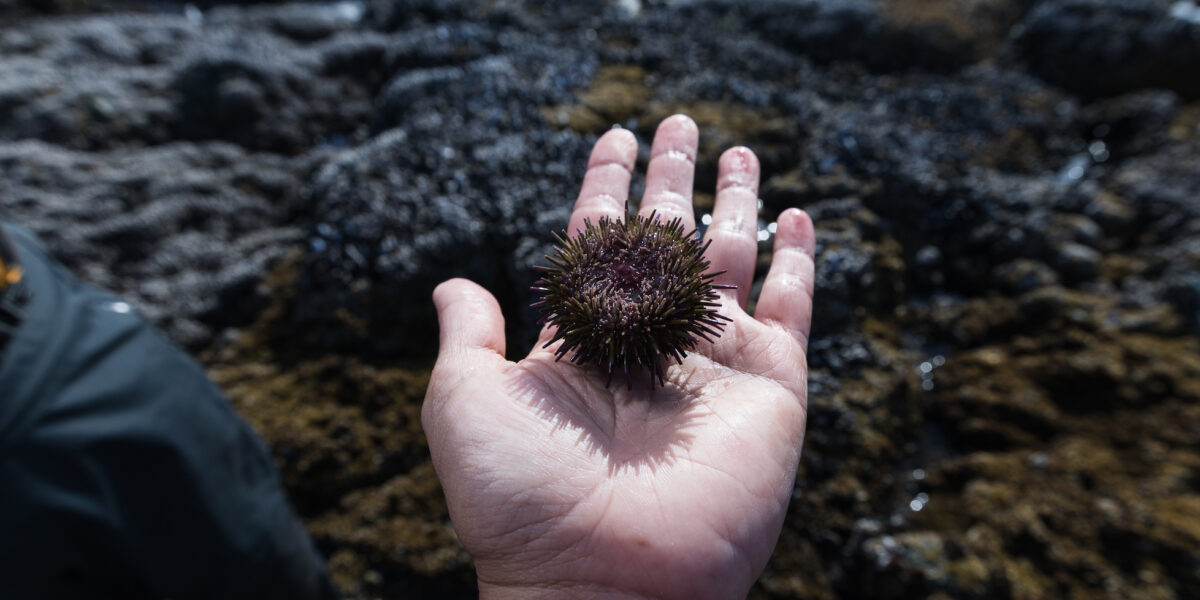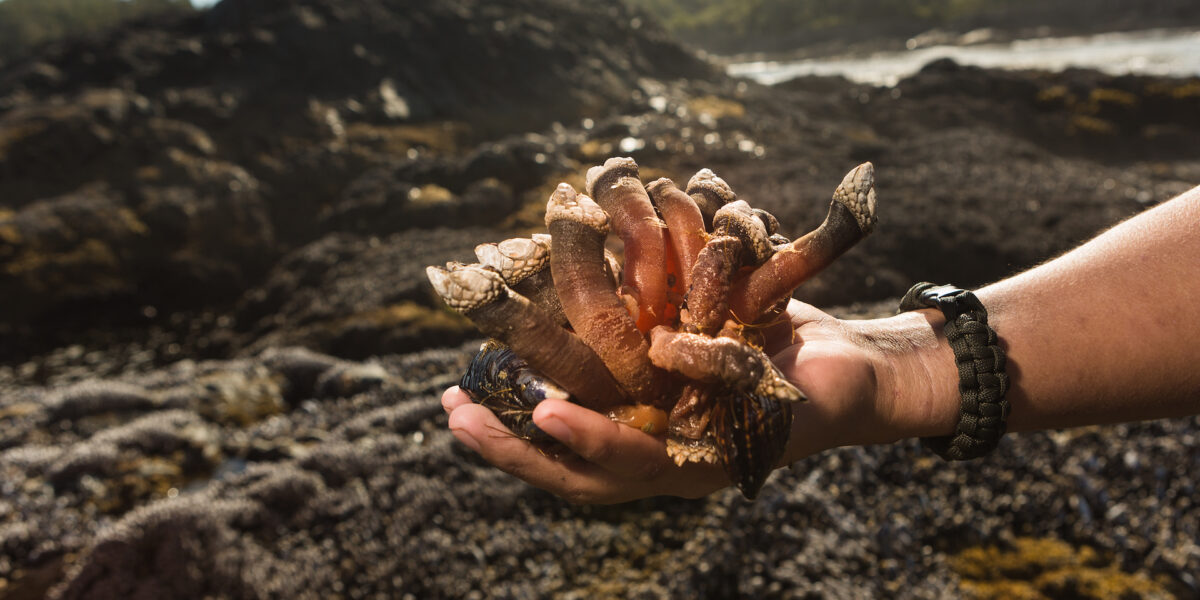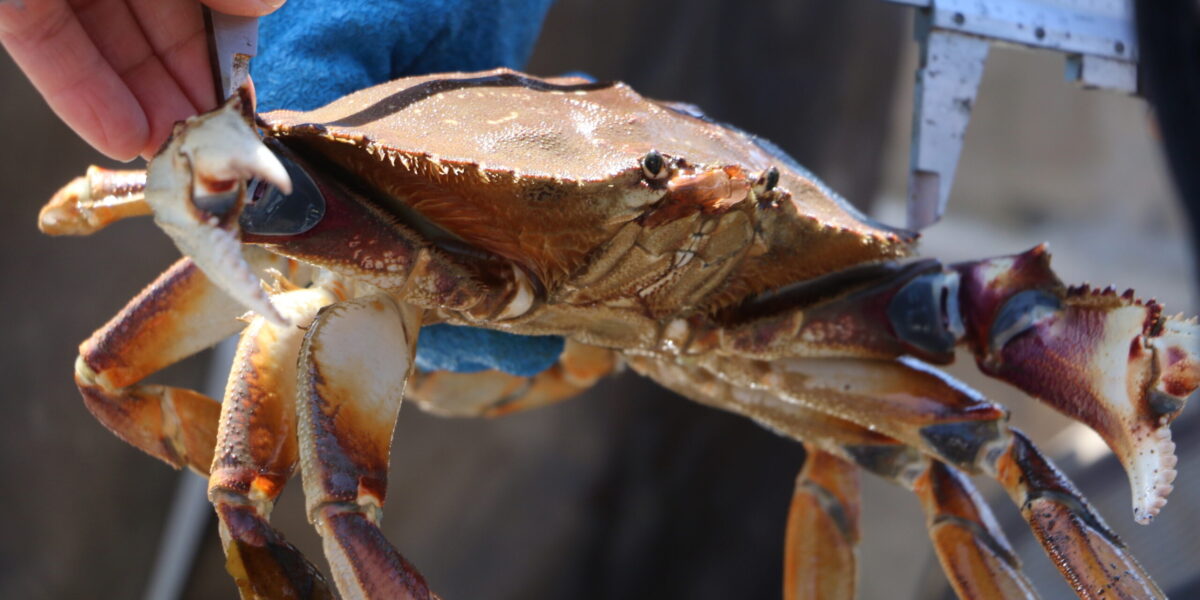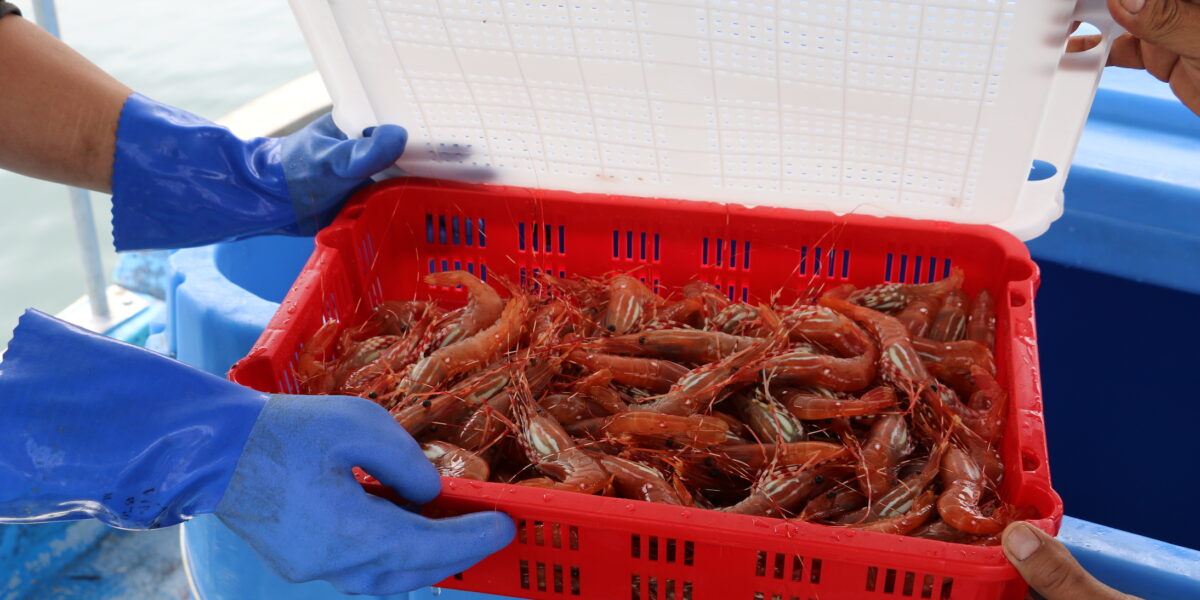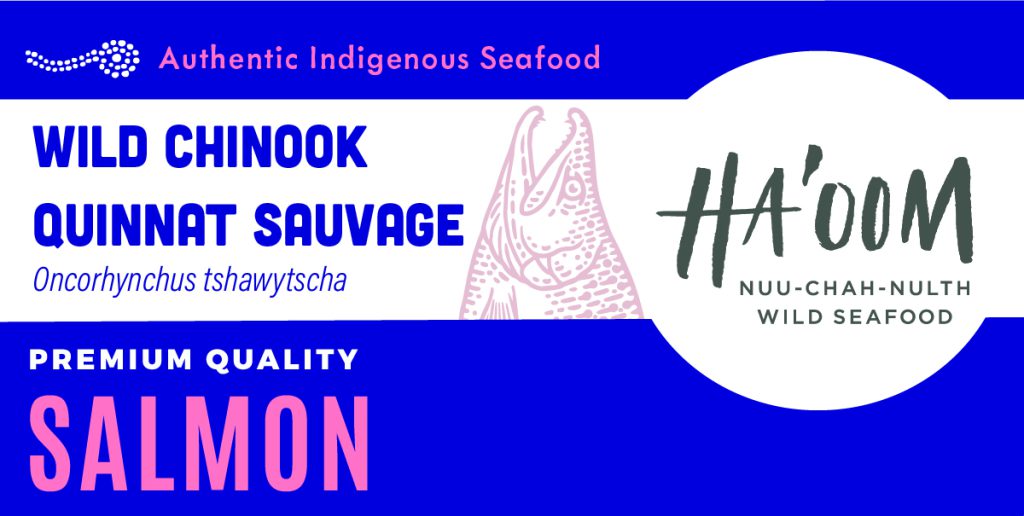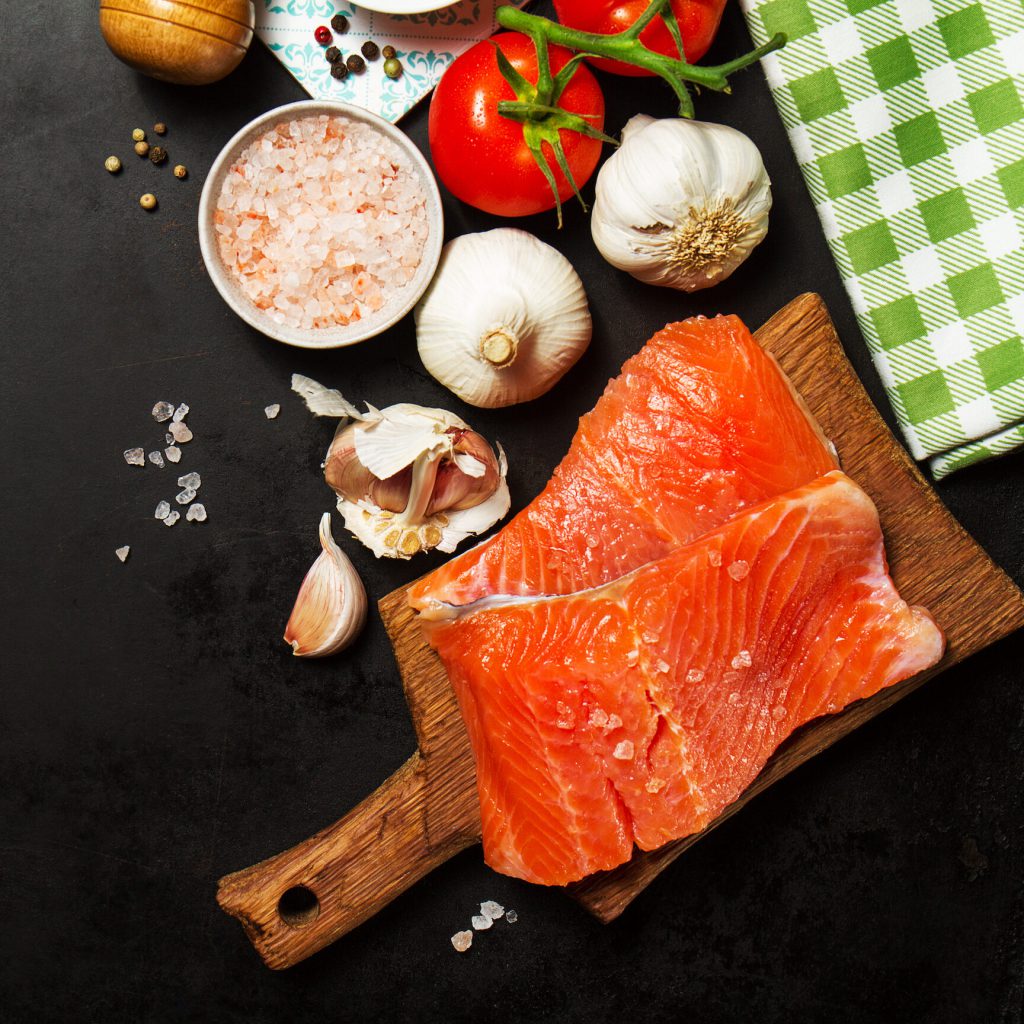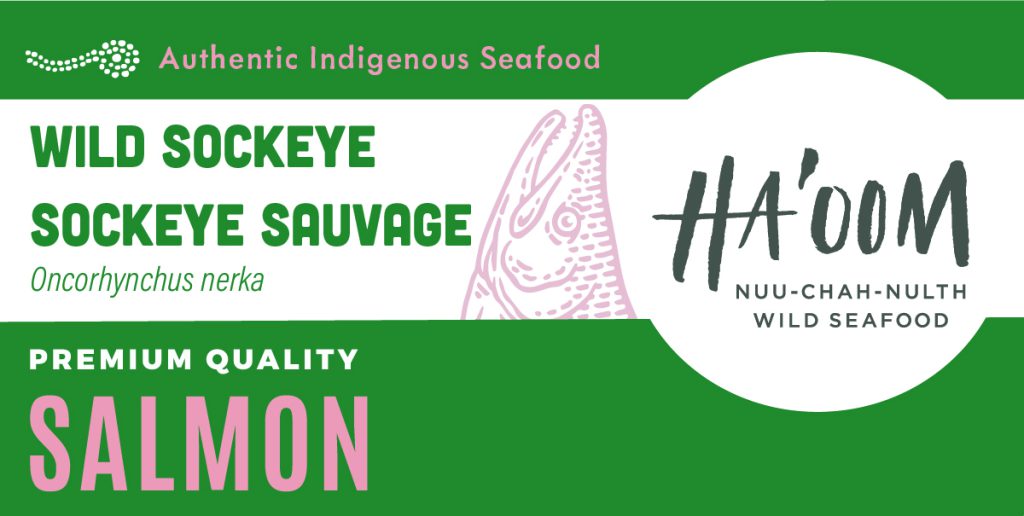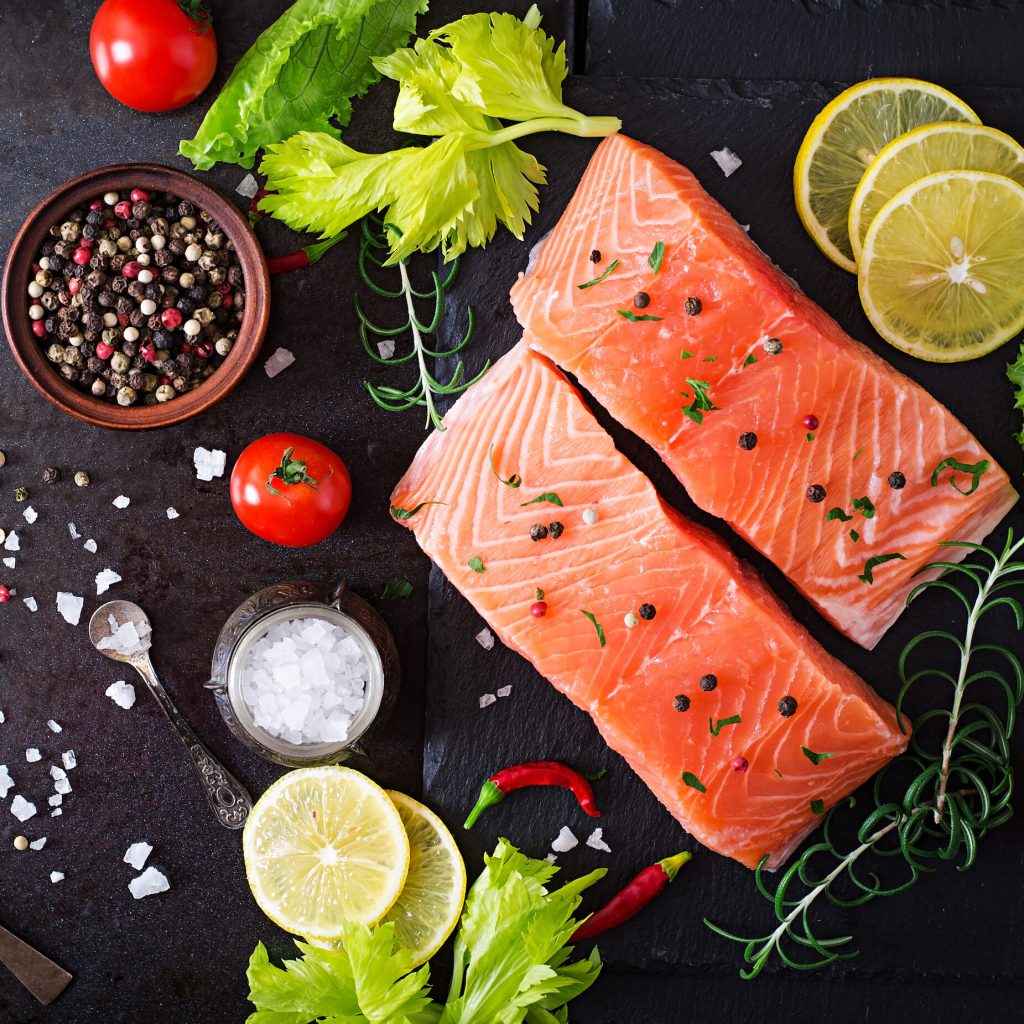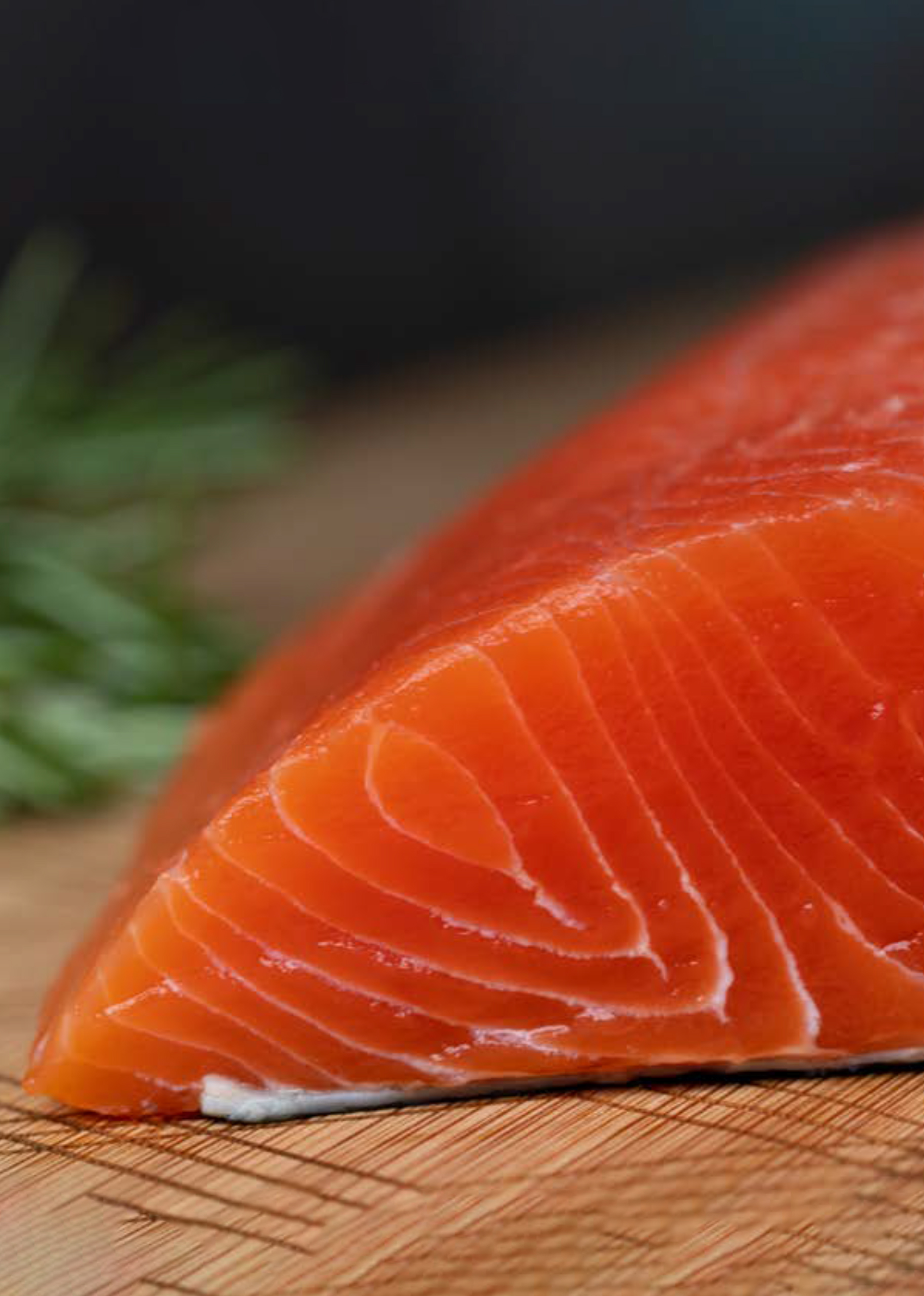Suuhaa (Chinook)
The beautiful suuhaa (chinook) salmon you are about to enjoy was sustainably caught by Nuu-chah-nulth fishers in Nootka Sound, located in Mowachaht/Muchalaht First Nations territory on what is known as Vancouver Island, British Columbia. They were captured through the selective use of The Nootka springs were gillnet caught by members of the Mowachaht/Muchalaht First Nations near the mouth of Conuma Creek and Gold River.
Our fish are not limitless. We want to be sure that for generations to come there are always more fish than the men, women, and children who are trying to catch them.
Nuu-chah-nulth fishers implement small-scale, hook-and-line and trap fisheries. By using these methods, our fishers create the least amount of by-catch, which are incidences of unwanted marine creatures that are caught while fishing for another species. The Nuu-chah-nulth value of ‘isaak’ (respect) strongly shapes the manner with which each fisher interacts with the fish.
Additional sustainability measures in our fisheries include regular biological assessments, regular checks on harvest locations to assess harvest techniques, and the training of every fisher who is on the water. All of our fisheries are monitored, and all harvested species are recorded and traced through rigorous data capture and analysis.
Nootka Sound
Location & Significant Feature
Suuhaa (chinook salmon) caught in Nootka Sound are landed by salmon fishers of Mowachaht/Muchalaht First Nation, which is located in and around Nootka Sound on the west coast of what is known as of Vancouver Island.
Covering an area of more than 2500 square kilometers, Nootka Sound is protected from the open sea by Nootka Island. Inshore from this island are several deep fjords reaching far inland to the north, south, and east which are fed by more than a dozen salmon-bearing rivers, making this one of the most diverse and productive chinook salmon fisheries on Canada’s west coast.
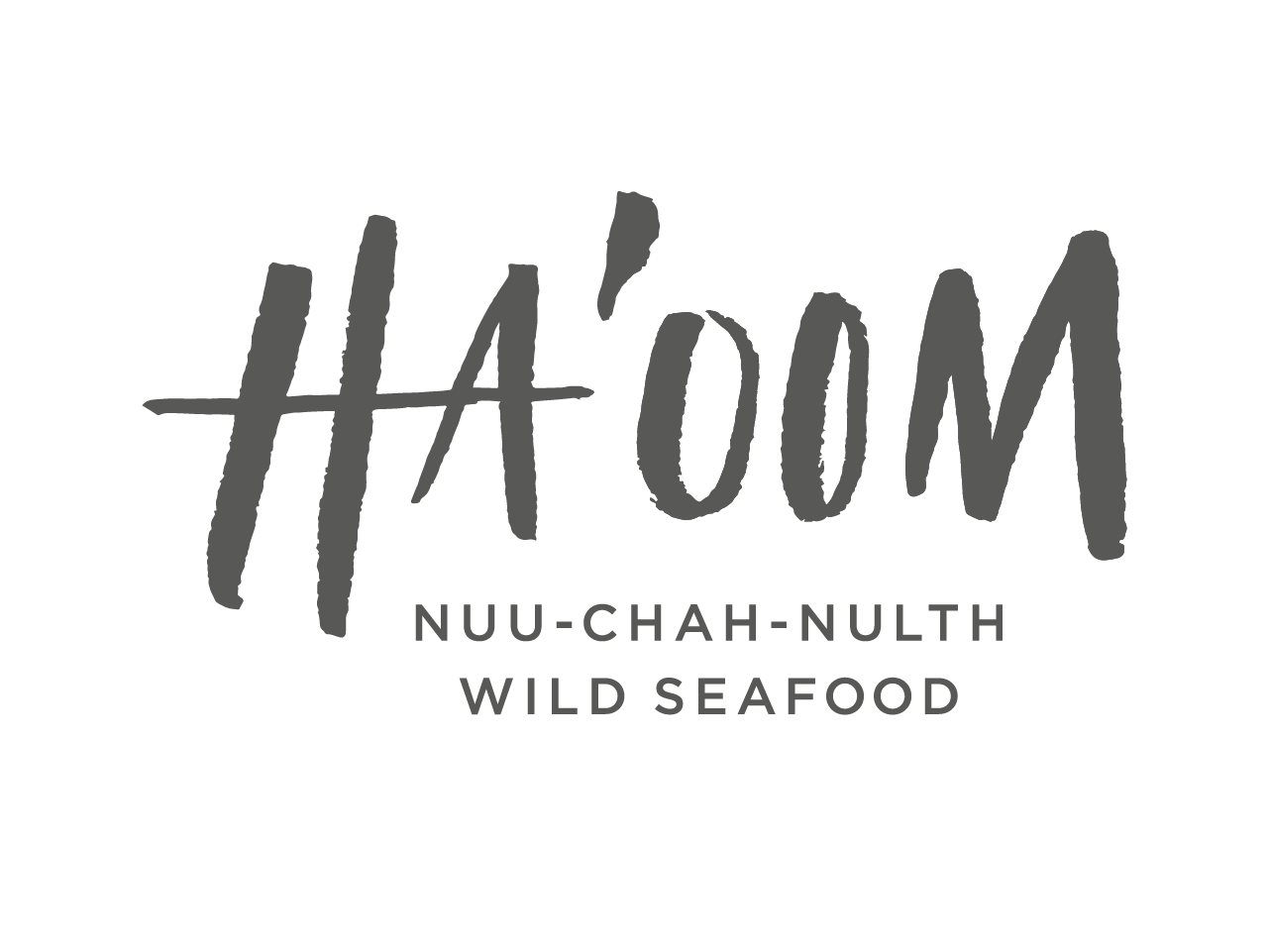
Mission
Our mission is defined as T’aaq-wiihak which in our language refers to fishing with permission of the Ha’wiih (hereditary chiefs). They include five Nuu-chah-nulth Nations (Ahousaht, Ehattesaht/Chinehkint, Hesquiaht, Tla-o-qui-aht, and Mowachaht/Muchalaht).
Our fishers observe a code of environmental stewardship based on the Nuu-chah-nulth principles hishukish t’sawalk (everything is one) and iisaak (respect with caring), that works to preserve rather than deplete fisheries resources for future generations.
Mowachaht/Muchalaht First Nation
One of 14 member nations of the Nuu-chah-nulth First Nation, the Mowachaht/Muchalaht people have enjoyed the rich diversity of our lands and waters since time immemorial and work today to manage and sustain this rich ecosystem for future generations.
Traditions
The traditional lifestyle of the Mowachaht/Muchalaht people is based on a long and rich history of whaling, fishing, hunting and foraging. Our ancestors were great whale hunters, pursuing them far out to sea in large ocean-going canoes from our community at Yuquot (Friendly Cove) on the southern tip of Nootka Island.
While Yuquot is one of our main villages, traditionally we moved seasonally to Tahsis in the north, and Tsaxana (Gold River) to the east following our harvest seasons. In each these places, we would reconnect with seasonal abundances like the spring migrations of herring that sought out our sheltered coves, and the summer migrations of salmon headed to local rivers like the Canuma, Burma and the Gold.
History
Yuquot means “where the winds blow from many directions”. Traditionally, Yuquot was our summer gathering place, coinciding with the harvest season to celebrate strength, commerce and hospitality (www.yuquot.ca , n.d.). Yuquot is also the site where the first European explorers landed 1778.
Plans to build a Yuquot Cultural and Interpretive Centre and Exhibition House are underway to showcase historic artifacts and culture, and in 2017 Mowachaht/Muchalaht applied for World Heritage Site status under the United Nations Educational Scientific and Cultural Organization (UNESCO) (www.yuquot.ca, n.d.).
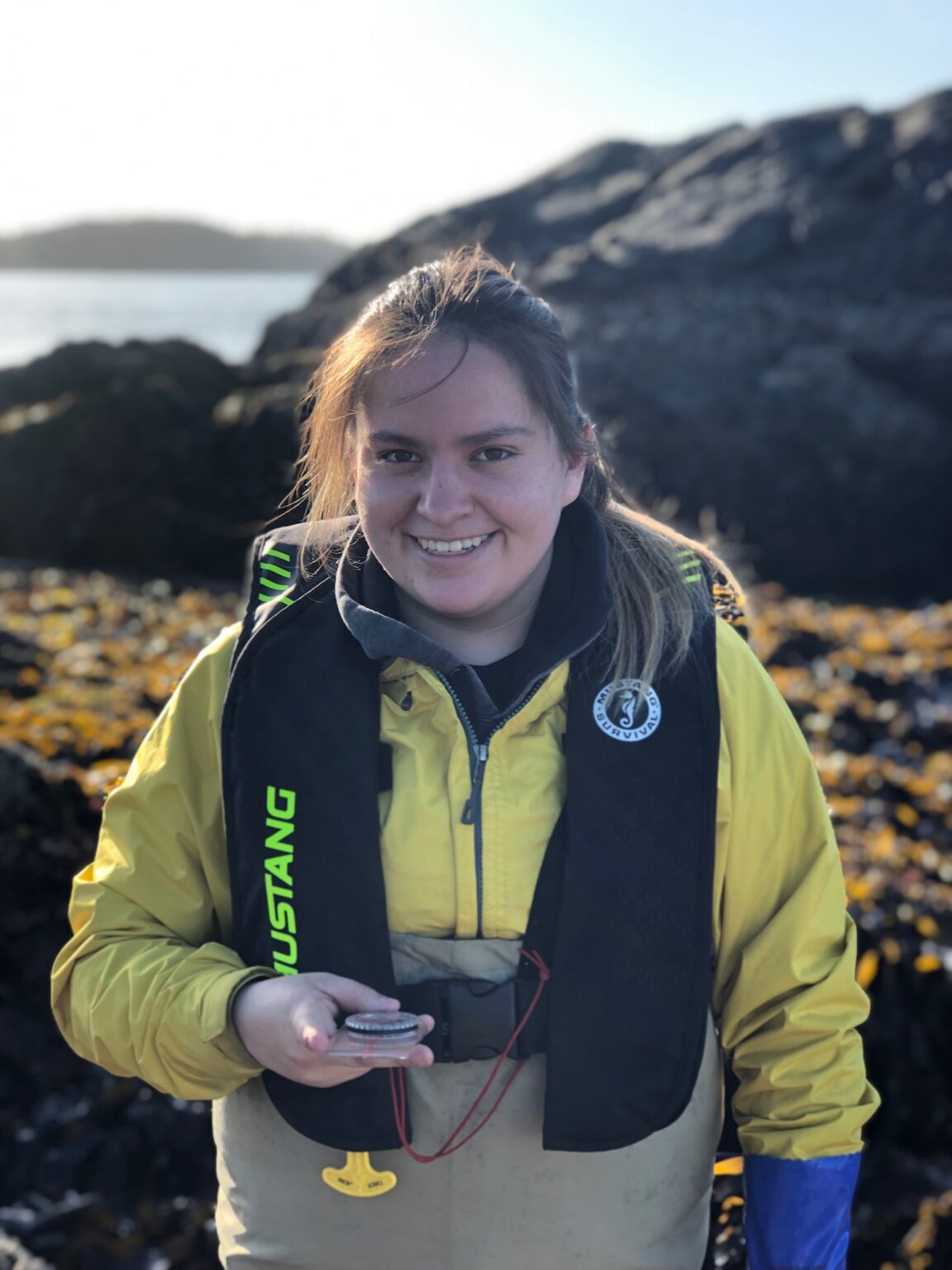
Modern Fishery
We follow our traditional values and principles to guide us in the management of our fisheries so that our future generations may continue to celebrate the richness provided by our Creator. Our management approaches are built on deep understanding and inherent knowledge of our local salmon populations, streams, rivers, and lands.
We are the managers of our traditional lands, waters, and resources.
Today, we continue to hold whales in great esteem but our trade and economy from the sea is focused on our healthy groundfish and wild salmon stocks, particularly our world famous suuhaa (chinook) salmon. Troll fisheries that involve a number of our own fishers target the first chinook salmon to arrive in July, while beach seines and traps help us to select the most abundant stocks near river mouths and let the less productive stocks through to spawn.
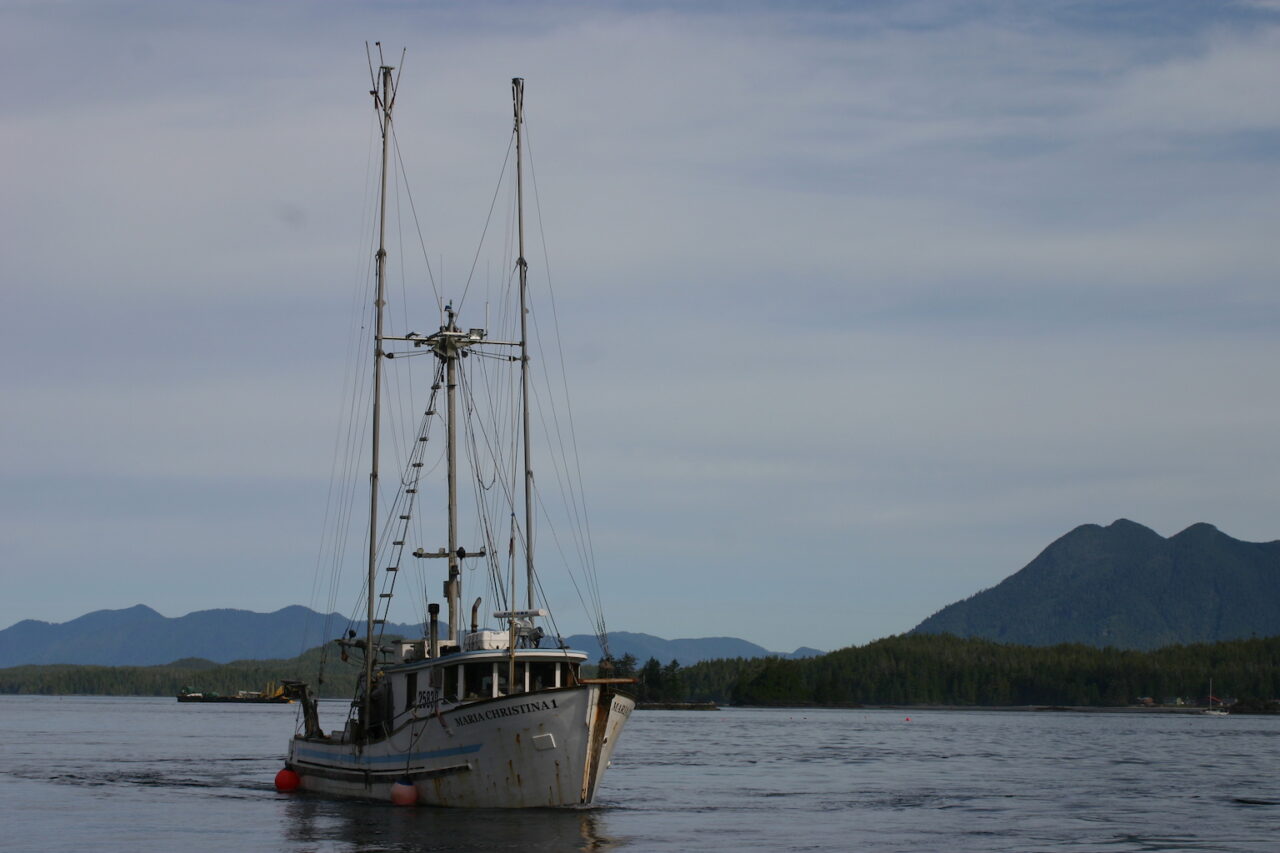
Our fishery off the river mouths and at Conuma fish hatchery is operated directly by the community, utilizing beach seines and lots of manpower taking just the number of salmon available. These are designed to harvest the surplus not required for enhancement.
In these ways our fishing patterns protect the genetic richness of this important salmon resource, giving it the strength to withstand things like climate change, and building the populations for future generations.
Mi?aat (Sockeye)
The beautiful mi?aat (sockeye) salmon you are about to enjoy was sustainably caught by Nuu-chah-nulth fishers from the Ahousaht, Ehattesaht, Mowachaht/Muchalaht, Hesquiaht and Tla-o-qui-aht First Nations (the “Five Nations”) along the west coast of Nuu-chah-nulth territory on what is known as Vancouver Island, British Columbia.
Our fish are not limitless. We want to be sure that for generations to come there are always more fish than the men, women, and children who are trying to catch them.
Nuu-chah-nulth fishers implement small-scale, hook-and-line and trap fisheries. By using these methods, our fishers create the least amount of by-catch, which are incidences of unwanted marine creatures that are caught while fishing for another species. The Nuu-chah-nulth value of ‘isaak’ (respect with caring) strongly shapes the manner with which each fisher interacts with the fish.
Additional sustainability measures in our fisheries include regular biological assessments, regular checks on harvest locations to assess harvest techniques, and the training of every fisher who is on the water. All of our fisheries are monitored, and all harvested species are recorded and traced through rigorous data capture and analysis.
We have fished these rich, rugged waters since time immemorial for sustenance and trade. Today we manage and sustain this fishery for both our current food, social and ceremonial needs and for that of our future generations, sharing any available surplus with eager markets.
Our troll-caught Mi?aat (Sockeye), come from local stocks like Somas River in May through June, and from migrating Fraser River sockeye in July and August when there is a fishable surplus available. Individually captured and handled with care, filleted and flash frozen, each fish must meet the high quality standards of our fishers and buyers. These sockeye are the first to arrive in the BC marine fisheries and are prised for their rich oil reserves and firm ruby-red flesh all season long, that’s perfect for any salmon dish.
Location & Significant Feature
Mi?aat (sockeye) caught in the Five Nations’ ha-ha-houthlee (traditional territory) are landed by Ahousaht, Ehattesaht/Chinehkint, Hesquiaht, Tla-o-qui-aht, and Mowachaht/Muchalaht fishers.
The Five Nations, comprised of Ahousaht, Ehattesaht/Chinehkint, Hesquiaht, Tla-o-qui-aht, and Mowachaht/Muchalaht First Nations, are part of the Nuu-chah-nulth First Nations.
Our traditional fishing area ranges more than 200 kilometers (130 miles) from south end of Long Beach (in Tla-o-qui-aht Territory) to Grassy Island to the north (in Ehattesaht/ Chinekintaht Territory).
Our coastline includes several deep fjords and our world-famous Island archipelago including 5 Provincial Parks (Strathcona, Sydney Inlet, Hesquiat Peninsula, Clayoquot Arm, and Clayoquot Plateau), and world famous Long Beach Reserve, Pacific Rim National Park.
Mission
We follow our traditional values and principles to guide us in the management of our fisheries so that our future generations may continue to celebrate the richness provided by our Creator.
Our management approaches are built on deep understanding and inherent knowledge of our local salmon populations, streams, rivers, and lands. We are the managers of our traditional lands, waters, and resources.
Traditions
T’aaq-wiihak refers to fishing with permission of the Ha’wiih (hereditary chiefs).
In 2009, the BC Supreme Court recognized the Aboriginal rights of our five Nuu-chah-nulth Nations (Ahousaht, Ehattesaht/Chinehkint, Hesquiaht, Tla-o-qui-aht, Mowachaht/Muchalaht) to catch and sell all species traditionally harvested within their territories.
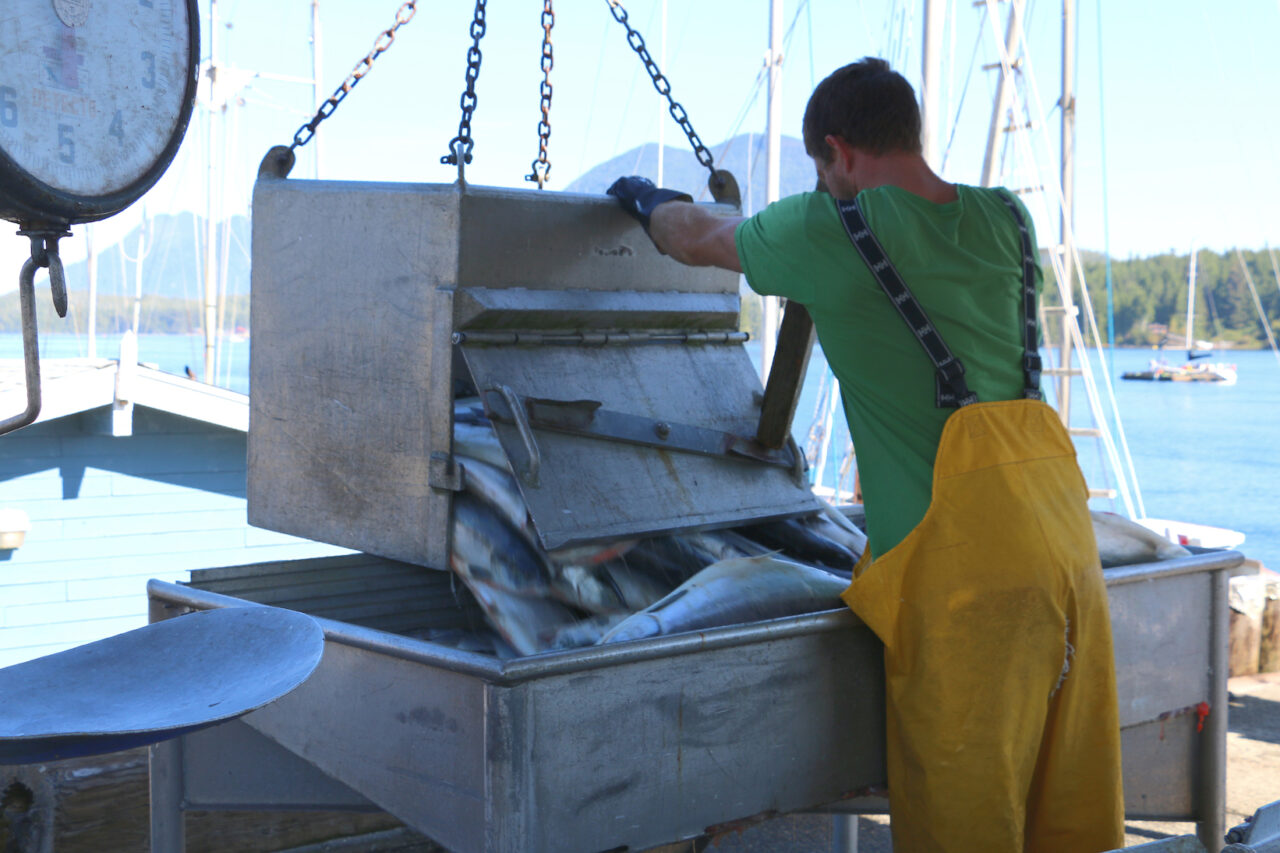
Modern Fishery
Within our collective fishing area, Ha’wiih will manage some fisheries collectively sharing fishing access for salmon that migrate through the territories en route to their natal streams.
Some salmon fisheries are managed individually, such as the Matchlee Bay and Nootka Sound where salmon have returned to their natal streams, supporting the local fisheries of one or two of our communities.
Canada and the Nations have been discussing ways to restore more localized economic fisheries that work for First Nations and coastal communities. Negotiations are ongoing.

Troll fisheries use a line and sometimes multiple lures, each with a single barbless hook to individually catch healthy feeding salmon.
Our fishing fleet is complete with vessels of all shapes and sizes to suit a fishers’ individual capacity and interest. The small versatile boats some of our fishers use are well suited to day trips and provide us with fresh catch each day in season, whereas the larger capacity trollers are geared up for bigger scale harvesting.

About our Brand and Logo
Our fishers observe a code of environmental stewardship based on the Nuu-chah-nulth principles hishukish t’sawalk (everything is one) and iisaak (respect with caring), that works to preserve rather than deplete fisheries resources for future generations.
Links
- Ha’oom Fisheries Society
- Ahousaht, Ehattesaht, Mowachaht/Muchalaht, Hesquiaht and Tla-o-qui-aht
